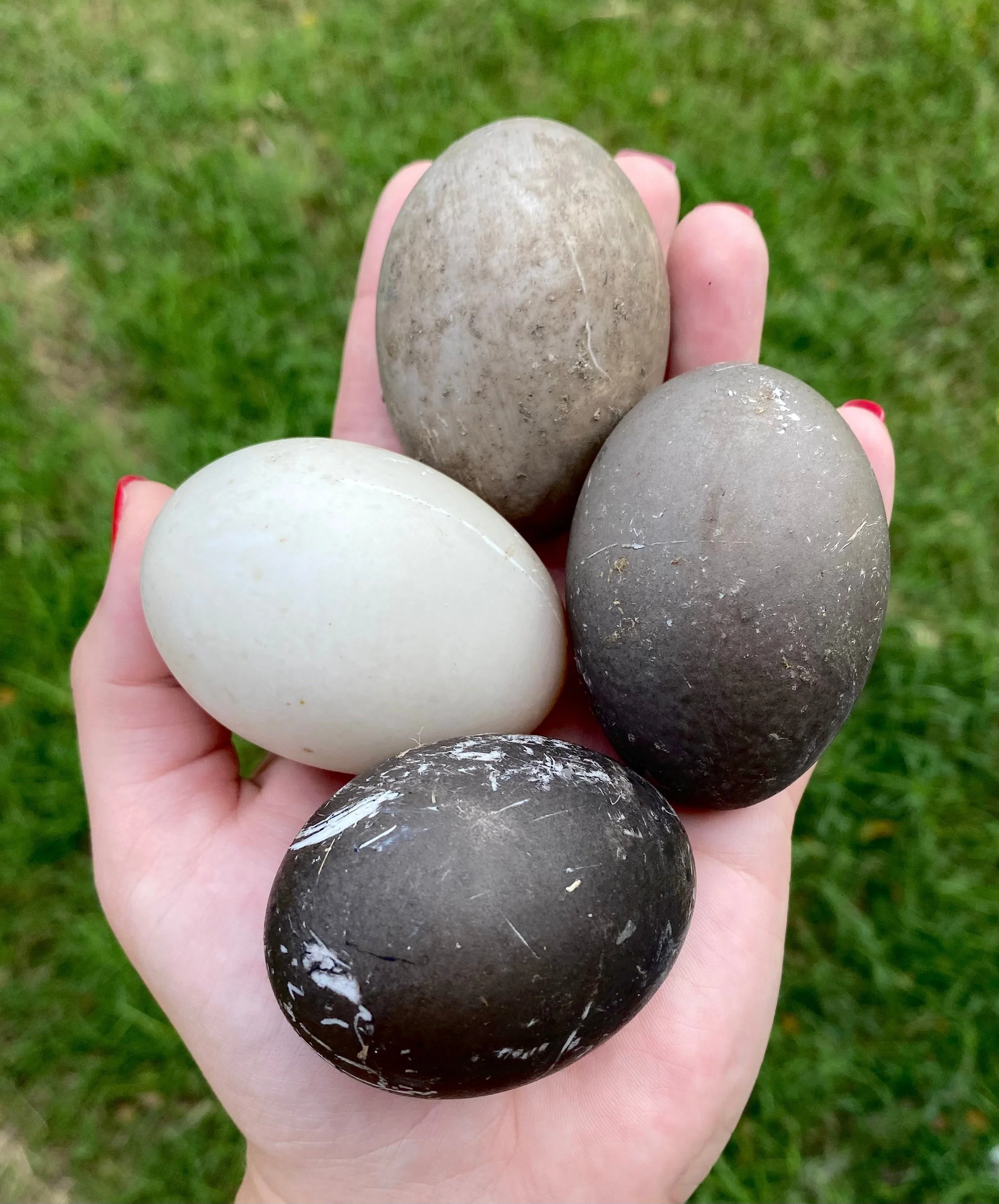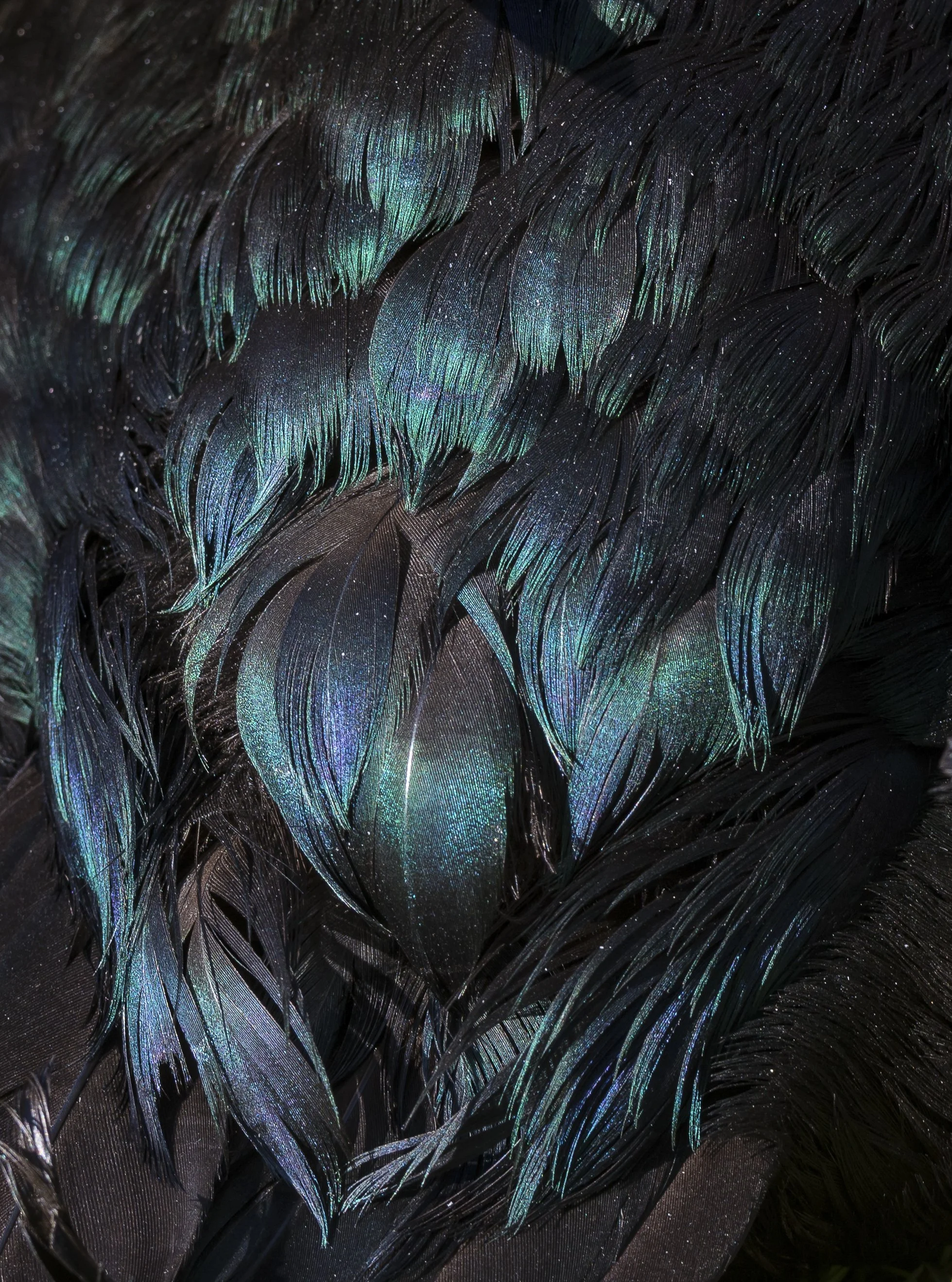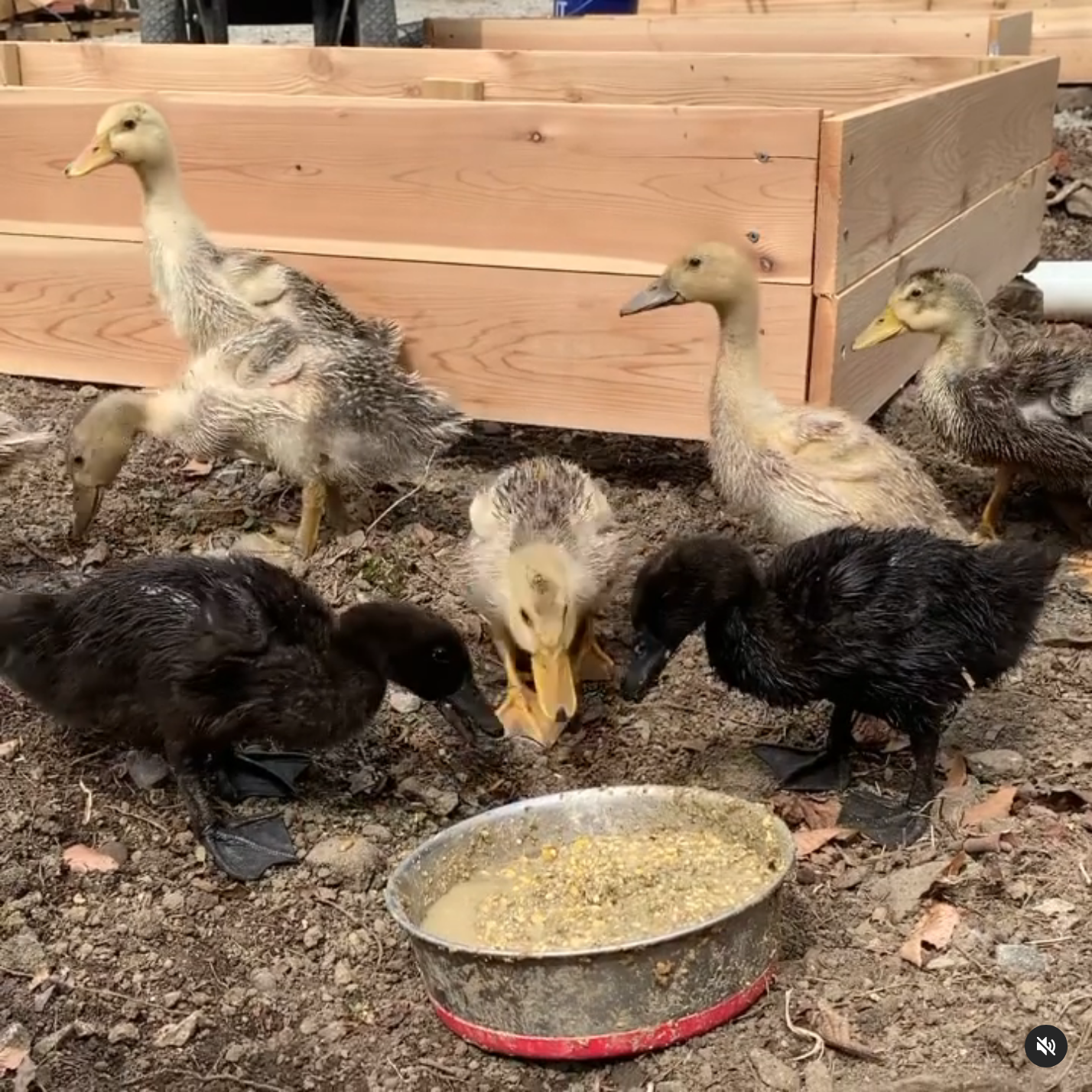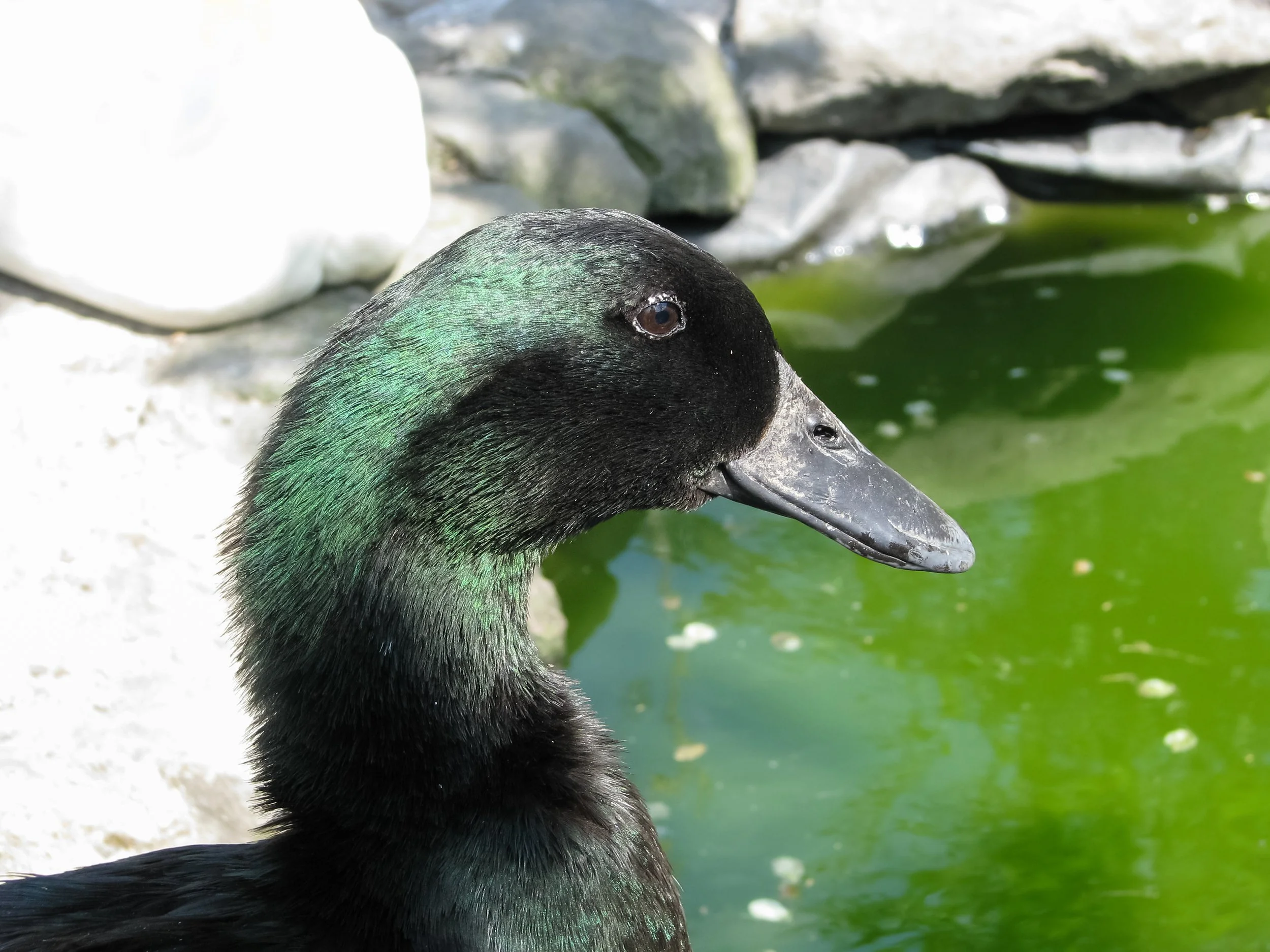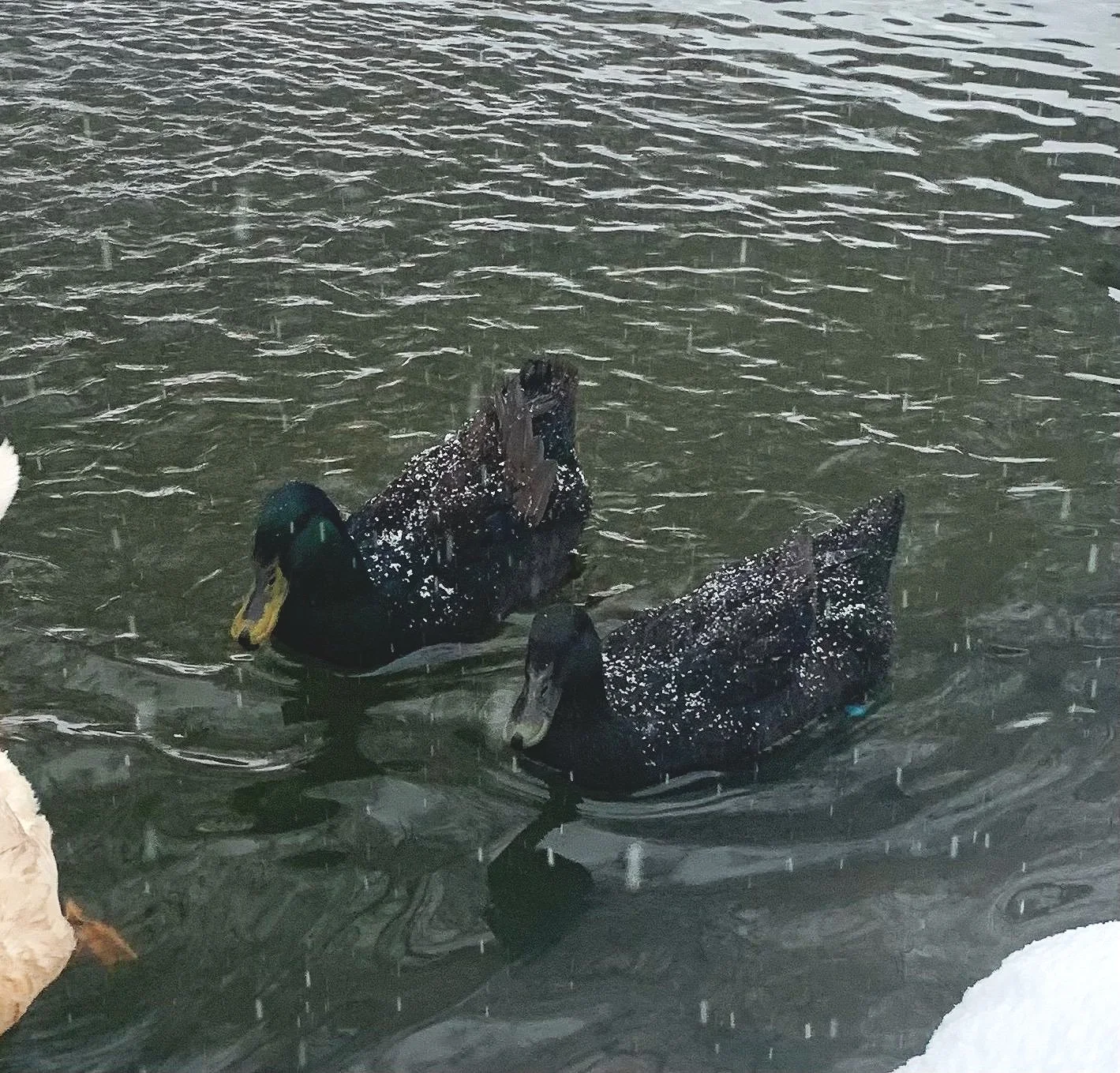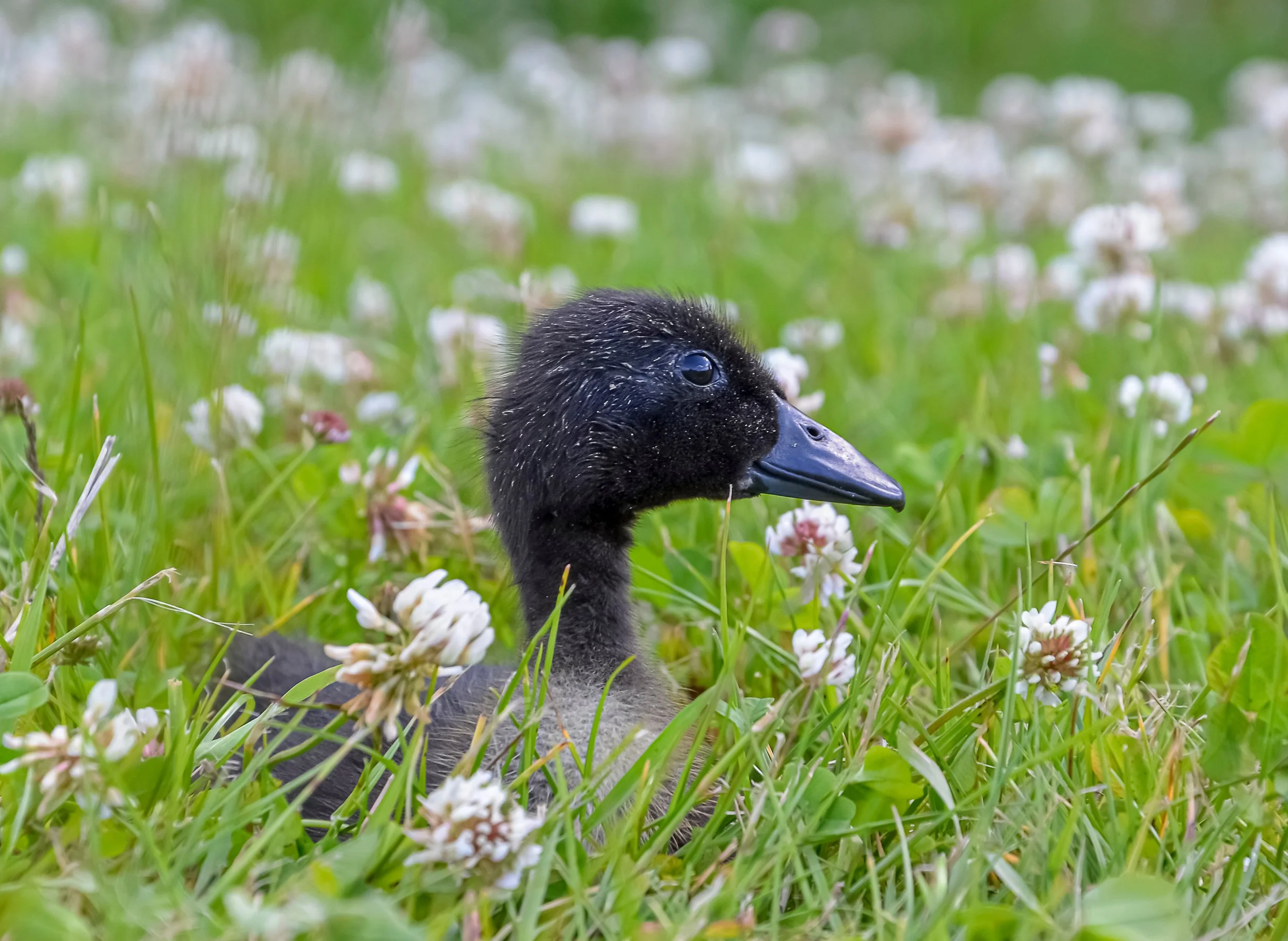
Cayuga Ducks
Cayuga ducks are a prized showy breed. Black to iridescent green feathers in the sunlight, and black legs and feet make them stand out. We’ve had people pull off the road above our pond to ask us about them!
Conservation Status: Classified as “threatened” on the Priority List of The Livestock Conservancy, and protected by the Rare Breeds Survival Trust (UK).
History: The Cayuga duck is an American duck breed that is as beautiful as it is mysterious in its origins. With its striking beetle green color, there are few birds that catch the eye as the Cayuga. According to local lore, this breed was developed from a pair of wild ducks that a miller in Duchess County, New York, caught on his mill pond in 1809. This report as it turns out seems to be historically inaccurate and is actually an accounting of the Gadwall duck as reported in the Birds of America by John J. Audubon in 1843. It is possible that Cayuga ducks could have originated from a population of wild ducks from the region but there is currently no definitive evidence found to substantiate the hypothesis.
Popular Use: Dual purpose for meat and eggs. Also valued as a show breed due to beautiful ornamental plumage.
Egg Color: White to black. The first eggs of the season tend to be black and lighten to gray, blue, green and even white as the season goes on.
Egg Size: 2.5–3.7 oz. (57–85 g).
Productivity: 100–150 eggs per year. Cayugas are often notoriously ‘late bloomers,’ often not laying in their first season.
Weight: Drake 6-8 lb.; duck 6–7 lb.
Temperament: Quiet and docile. Tend to go broody.
Adaptability: If and when they do quack, it is quiet compared to many other breeds, making Cayugas well-suited as a backyard duck. Due to their dark color, Cayugas can be heat-sensitive and do need protection from hot sun.
Cayuga ducks are loved for their beautiful jet black coloring as well as their unique gray to black eggs.
As the duck ages, feathers will eventually become mottled with white until it's almost all white. This changing of colors occurs much quicker in females than males. In addition, their black legs turn more orange as they mature.
Information sourced from: Storey’s Guide to Raising Ducks, Storey’s Illustrated Guide to Poultry Breeds, & British Waterfowl Association
